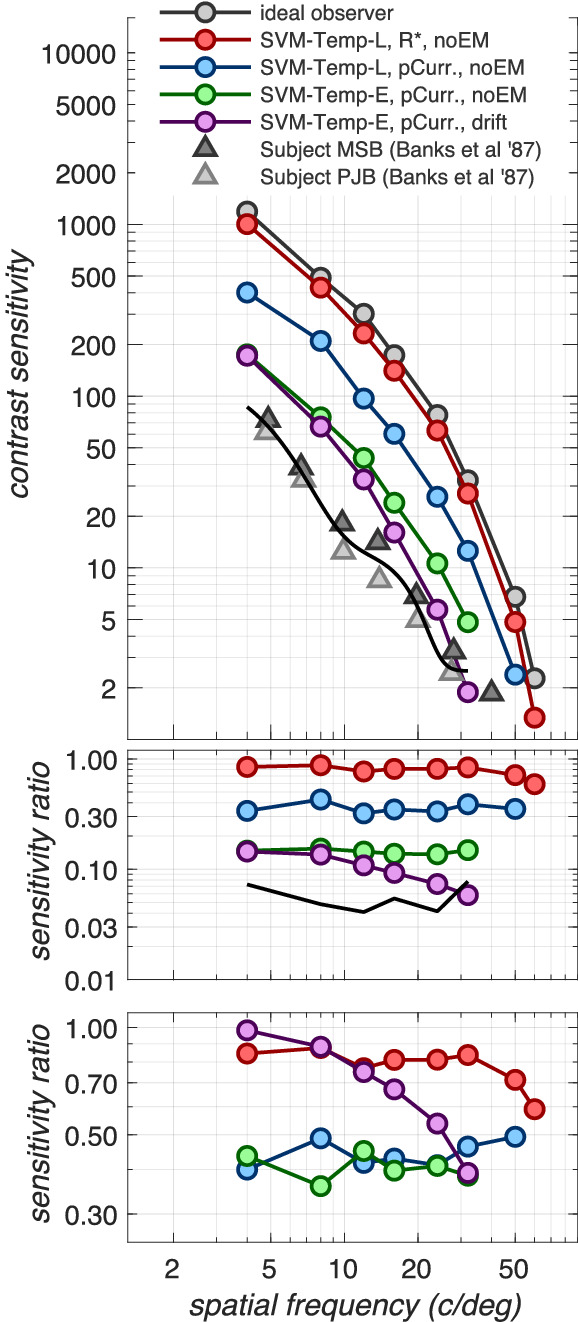Figure 6.

Comparing human and computational CSFs. Top panel: spatial CSFs computed for a 2 mm pupil, matching the psychophysical conditions of Banks et al. (1987). The curves through the different-colored disks show estimated CSFs that separate out the effects of a variety of physiological factors. The gray disks depict the CSF at the level of cone photopigment excitations in the absence of fixational eye movements using the ideal observer, analytically based inference engine, which has exact knowledge of the stimulus and Poisson noise statistics. This CSF serves as the reference CSF. Red disks depict the CSF also at the level of cone photopigment excitations and in the absence of fixational eye movements but now derived using the SVM-Template-Linear computational observer. Blue disks depict the CSF at the level of cone photocurrent in the absence of eye movements, also using the SVM-Template-Linear observer. Green disks depict the CSF also at the level of cone photocurrent and in the absence of eye movements but now using the SVM-Template-Energy observer. Magenta disks depict the CSF at the level of photocurrent in the presence of fixational eye movements using the SVM-Template-Energy observer. Triangles depict the CSFs measured in two subjects by Banks et al. (1987). Middle panel: CSF ratios with respect to the reference CSF (gray disks). These data capture accumulated loss due to all processing stages up to the current one. Bottom panel: CSF ratios with respect to the CSF computed at the previous processing stage. These data capture sensitivity loss due to different processing stages: red disks: loss due to employing a computational observer, blue disks: loss due to photocurrent generation, green disks: loss due to using an energy computational observer, magenta disks: loss due to fixational eye movements. The photocurrent and the energy inference engine each contribute to a 2.0- to 2.5-fold sensitivity loss across the spatial frequency range. Fixational eye movements contribute an additional loss which ranges from a factor of 1.0 to a 2.5 as spatial frequency increases from 4 to 32 c/deg.
